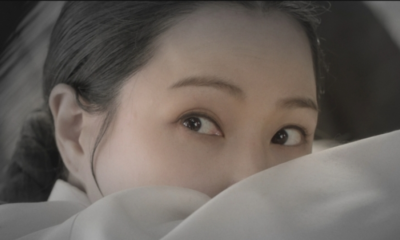LIFE STYLE
Balancing Form and Function: The Principles of Interior Design
In the world of interior design, the marriage of form and function is a delicate dance. It involves the art of creating visually stunning spaces that are also highly functional and practical. Understanding the principles of interior design is essential for achieving this balance successfully.
This article will explore these principles, provide insights on how to balance aesthetics and practicality, offer interior design tips on creating a cohesive design scheme, and emphasize the importance of balancing interior design styles.
As a professional interior design studio, we have a unique perspective on the elements of design, by also respecting the importance of these principles of aesthetics and functionality and strive to create personalized spaces that also speak to every individuals dreams.
Understanding the Principles of Interior Design:
To create a harmonious and functional space, it is crucial to understand the principles that guide interior design. These principles include space planning, scale and proportion, balance, and the use of color and texture.
Space planning involves analyzing the available space and arranging furniture and elements to optimize functionality and flow. This principle ensures that the space is well-utilized and serves its intended purpose effectively.
Scale and proportion are crucial considerations in interior design services. By maintaining the proper scale and proportion within a space, designers can create a sense of balance and harmony. Oversized or undersized furniture can disrupt the overall aesthetic and functionality of a room.
Achieving balance is about distributing visual weight evenly throughout a room. This can be achieved through symmetrical or asymmetrical arrangements, depending on the desired effect. Balance ensures that the space feels visually pleasing and comfortable.
The use of color and texture plays a significant role in transforming a space. A carefully chosen color palette can evoke specific emotions and set the tone for the room. Combining different textures adds depth and visual interest to the design, enhancing its overall appeal.
How to Balance Aesthetics and Practicality?
Balancing aesthetics and practicality is a critical aspect of interior design. It involves finding a middle ground where the space is visually appealing while serving its functional purpose effectively.
To achieve this balance, it is essential to define the needs of the space. Understanding the functional requirements and considering the intended users will guide the design choices. Prioritizing functionality ensures that the furniture, fixtures, and layout serve their intended purpose.
One of the key interior design tips for balancing aesthetics and practicality is to choose versatile pieces. Furniture and accessories that are visually appealing and flexible in their functionality allow for adaptability as needs change over time.
Integrating smart storage solutions is another practical approach. By keeping the space organized and free of clutter, the overall aesthetic is preserved while maintaining functionality.
Balancing Interior Design Styles:
Creating a cohesive design scheme often involves balancing interior design styles. This can be achieved by establishing a theme or concept that guides the design choices. Whether it’s a specific style, color scheme, or personal narrative, the theme acts as a unifying element.
When balancing interior design styles, it is crucial to use a consistent color palette throughout the space. This ensures a sense of cohesion and harmony, even if different styles are incorporated.
Mixing patterns and textures is another effective technique. By carefully selecting patterns and textures that complement each other, designers can add visual interest and depth to the design.
Lighting also plays a significant role in balancing interior design styles. Incorporating a mix of ambient, task, and accent lighting creates layers and controls the mood of the space, enhancing the overall aesthetic.
In conclusion, balancing form and function in interior design requires a deep understanding of the principles that guide the field. By prioritizing functionality, incorporating interior design tips, and considering the balance of various styles, we, at Volume 9 studio can create visually stunning spaces that are highly functional and practical. Achieving this delicate balance not only enhances the overall aesthetic appeal but also ensures that the space serves its intended purpose effectively.
- Filmul „Coroana României”, lansat la Lisabona cu ocazia împlinirii a 50 de ani de la Revoluția Garoafelor
- Pepe lansează astăzi „Pasăre de Noapte”, un nou single şi un nou videoclip
- Echipa lui Chef Richard Abou Zaki, învingătoare în ediția de ieri Chefi la cuțite. Show-ul, lider de audiență!
- În perioada Sărbătorilor Pascale, Kanal D și Kanal D2 își invită telespectatorii să urmărească maratonul filmelor de referință despre creștinătate
- Ediţii de colecţie „TEZAUR FOLCLORIC”, de Sfintele Paşti la TVR 1 şi TVR Folclor
-

 Emisiuni2 săptămâni ago
Emisiuni2 săptămâni agoCarmen Târnoveanu: interviu în exclusivitate pentru Radar de Media
-

 Program TV7 zile ago
Program TV7 zile agoProgramul PRO TV pentru săptămâna 29 aprilie – 05 mai 2024
-

 EVENTSo săptămână ago
EVENTSo săptămână ago“Fii regina pentru o zi” – eveniment unicat in Romania.
-

 AUDIENȚE TV2 săptămâni ago
AUDIENȚE TV2 săptămâni agoAna Maria Pal a părăsit Survivor All Stars, iar concurenții rămași vor da, diseară, bătălia Imunității: ”unul singur va căpăta acest colan”
-

 Topuri anualeo săptămână ago
Topuri anualeo săptămână agoAUDIENȚE TV: Grupul PRO – cea mai mare cotă de piață trimestrială din ultimii 10 ani!
-

 Program TV2 săptămâni ago
Program TV2 săptămâni agoProgramul PRO TV pentru săptămâna 22 – 28 aprilie 2024
-

 Documentar2 săptămâni ago
Documentar2 săptămâni agoJames Cameron revine cu un serial premiat cu Emmy: „Secretele Caracatiței” va fi difuzat pe National Geographic Wild pe 22 Aprilie
-

 Emisiuni2 săptămâni ago
Emisiuni2 săptămâni agoSorin Bontea, Florin Dumitrescu și Cătălin Scărlătescu revin la PRO TV!
-

 Monden2 săptămâni ago
Monden2 săptămâni agoCelebra Naomi a murit. Vedeta ajunsese într-un spital din Germania, în comă
-

 Filme2 săptămâni ago
Filme2 săptămâni agoHamas – Violenta nu e o optiune, in curand in cinematografe
-

 Program TV2 săptămâni ago
Program TV2 săptămâni agoProgramul HAPPY CHANNEL pentru săptămâna 19 – 25 aprilie 2024
-

 Eurovision2 săptămâni ago
Eurovision2 săptămâni agoEurovision 2024 . Țările participante, orașul gazdă, favoriți- VIDEO TOATE MELODIILE
-

 K-News & Cultureo săptămână ago
K-News & Cultureo săptămână ago„Floarea nopții” – un nou serial coreean de excepție, producție 2024, la TVR 1
-

 Reality Show2 săptămâni ago
Reality Show2 săptămâni agoFilmările Survivor All Stars s-au încheiat, iar concurenții sunt în țară! Finala va fi LIVE!
-

 ȘTIAI CĂ...?2 săptămâni ago
ȘTIAI CĂ...?2 săptămâni agoAfla aici cine este Corina Munteanu
-

 ENTERTAINMENT2 săptămâni ago
ENTERTAINMENT2 săptămâni agoZambeste nu te costa nimic 😁

























































